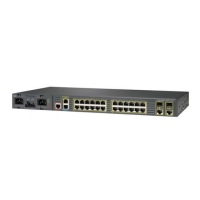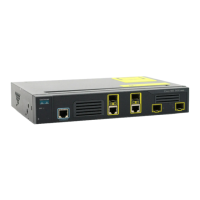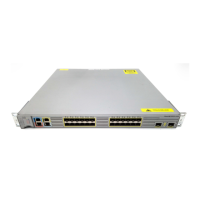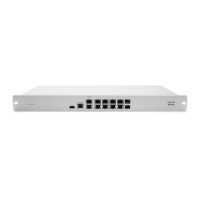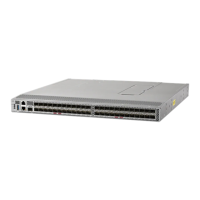33-15
Cisco ME 3400 Ethernet Access Switch Software Configuration Guide
OL-9639-07
Chapter 33 Configuring QoS
Understanding QoS
Figure 33-5 Policing of Classified Packets
These sections describe the types of policing supported on the switch:
• Individual Policing, page 33-15
• Aggregate Policing, page 33-16
• Unconditional Priority Policing, page 33-18
Individual Policing
Individual policing applies only to input policy maps. In policy-map configuration mode, you enter the
class command followed by class-map name, and enter policy-map class configuration mode.
You use the police policy-map class configuration command to define the policer, the committed rate
limitations of the traffic, committed burst size limitations of the traffic, and the action to take for a class
of traffic that is below the limits (conform-action) and above the limits (exceed-action). If you do not
specify burst size (bc), the system calculates an appropriate burst size value. The calculated value is
appropriate for most applications. For more information, see the
“Attaching a Traffic Policy to an
Interface” section on page 33-38.
To make the policy map effective, you attach it to a physical port by using the service-policy input
interface configuration command. Policing is done only on received traffic, so you can only attach a
policer to an input service policy.
This is an example of basic policing for all traffic received with a CoS of 4. The first value following the
police command limits the average traffic rate to 10, 000,000 bits per second (bps); the second value
represents the additional burst size (10 kilobytes). The policy is assigned to Fast Ethernet port 1.
Switch(config)# class-map video-class
Switch(config-cmap)# match cos 4
Switch(config-cmap)# exit
Switch(config)# policy-map video-policy
Switch(config-pmap)# class video-class
Switch(config-pmap-c)# police 10000000 10000
Switch(config-pmap-c-police)# exit
Switch(config-pmap-c)# exit
Switch(config-pmap)# exit
Switch(config)# interface fastethernet0/1
Switch(config-if)# service-policy input video-policy
Switch(config-if)# exit
You can use the conform-action and exceed-action policy-map class configuration commands or the
conform-action and exceed-action policy-map class police configuration commands to specify the
action to be taken when the packet conforms to or exceeds the specified traffic rate.
141153
Receive
Classify
Drop
Queuing,
scheduling,
and shaping
An exceed-action at this
point results in dropped
or reclassified packets.
Packets that conform
to the committed
information rate (CIR)
Packets that exceed
the CIR
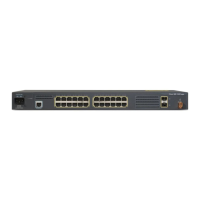
